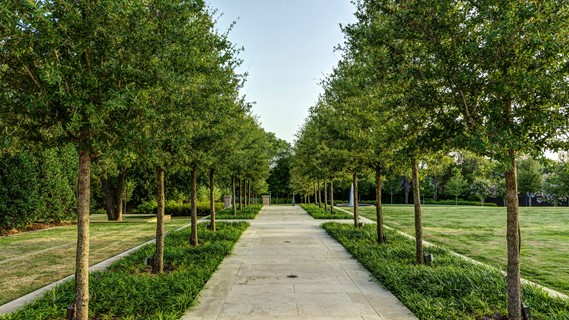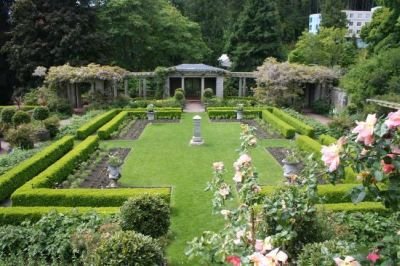Hilton Head Landscapes for Dummies
The 7-Minute Rule for Hilton Head Landscapes
Table of ContentsExcitement About Hilton Head LandscapesLittle Known Questions About Hilton Head Landscapes.Our Hilton Head Landscapes DiariesSome Ideas on Hilton Head Landscapes You Need To KnowAll about Hilton Head LandscapesThe Buzz on Hilton Head LandscapesThe Ultimate Guide To Hilton Head LandscapesThings about Hilton Head Landscapes
Kind compatibility is also a major element of unity in designone or 2 noticeably various forms benefit comparison and emphasis, but normally all various other forms need to have some similarities for a merged appearance. Structure describes how crude or fine the surface of the plant or hardscape product feels and/or looks.
Examples of plants with crude appearance include philodendrons, agaves, bromeliads, hollies, palms, and hydrangeas. Hardscape with crude structure consists of rough-cut rock, rough-finished brick, and incomplete timber with knots and an increased grain. Aged or old construction product that keeps a weather-beaten surface is frequently crude in appearance. Attributes that create fine structure consist of little vegetation; thin, strappy leaves (turfs) or tall, slim stems; small, dense branches and little branches; long stems (creeping plants); and small, delicate flowers.
Our Hilton Head Landscapes Statements
A lot of plants are medium texture, in that they can not be referred to as having either crude or great texture. They are defined by medium-sized leaves with straightforward shapes and smooth edges. The average-sized branches are not densely spaced neither extensively spaced, and the overall kind is generally rounded or mounding. Medium-textured plants act as a history to link and merge the crude- and fine-textured plants.

To make a space feel smaller, place the coarse structures along the outer border and the fine textures closest to the customer. The detail of the rugged structure makes the plants appear closer and makes the area really feel smaller sized. The regarded appearance of plants can also change with the distance from the plant.
The 6-Minute Rule for Hilton Head Landscapes
Bold shades raise the comparison and make the texture show up coarser, while low-key colors can squash structure. Hardscape with a coarse texturesuch as really rough rocks and vibrant, big timberstends to make all plant material show up a lot more medium distinctive. Designers usually establish a texture study (Number 8) on paper to help decide the arrangement of plant products.
Color in plant product and hardscape adds rate of interest and selection to the landscape. Color is the most noticeable component in the landscape and is typically the emphasis of the majority of homeowners; however, it is additionally the most short-term component, usually lasting only a few weeks a year for private plants.
All about Hilton Head Landscapes
A straightforward description of the color wheel consists of the three primary shades of red, blue, and yellow; the 3 second colors (a mix of 2 primaries) of environment-friendly, orange, and violet; and 6 tertiary shades (a mix of one surrounding key and second shade), such as red-orange. Shade concept clarifies the partnership of colors to every other and how they should be made use of in a his explanation structure.

Comparable (in some cases called unified) shade schemes are any three to five colors that are adjacent on the shade wheel, such as red, red-orange, orange, yellow-orange, and yellow, or blue, blue-violet, and violet (Landscaping bluffton sc). The shades are relevant per other because they usually include 2 primaries blended to create a secondary and two tertiary shades, which suggests they share usual homes
They have a tendency to have high contrast between them. The most typical sets are violet and yellow, red and green, and blue and orange. Complementary colors are commonly discovered naturally in flowers; a common set is yellow and violet. Color is found in the flowers, vegetation, bark, and fruit of plants.
Hilton Head Landscapes Can Be Fun For Everyone
Eco-friendly vegetation in all its various tones is the leading shade by quantity, but various other colors catch attention quicker as a result of their high comparison to the color eco-friendly. Shade is likewise located in buildings, rocks, pavers, timber, and furnishings. Many shades in natural materials, such as rock and wood, are typically soft and tend to be variants of brown, tan, and light yellow.
Colors have residential or commercial properties that can influence emotions, spatial understanding, light top quality, equilibrium, and focus. Awesome shades often tend to be relaxing and must be utilized in areas for relaxation and serenity.
About Hilton Head Landscapes
Great colors have a tendency to recede and are viewed as being further away, making an area really feel larger. Color can additionally be utilized to record attention and straight views.
Intense yellow, which has the greatest strength, also has a high contrast with all various other shades (frequently explained as a "pop" of shade) and ought to be utilized moderately. A percentage of intense shade has as much aesthetic weight as a huge amount of a more suppressed or weak shade.
Analogous (in some cases called unified) shade systems are any three to five colors that are surrounding on the shade wheel, such as red, red-orange, orange, yellow-orange, and yellow, or blue, blue-violet, and violet. The shades relate to every other since they commonly include two primaries mixed to form an additional and two tertiary colors, which indicates they share usual residential properties.
4 Easy Facts About Hilton Head Landscapes Explained
They often tend to have high comparison in between them. The most common sets are violet and yellow, red and green, and blue and orange. Corresponding shades are often found naturally in flowers; a common set is yellow and violet. Shade is discovered in the flowers, foliage, bark, and fruit of plants.
Green foliage in all its numerous tones is the dominant color by quantity, but various other colors capture focus quicker as a result of their high contrast to the color environment-friendly - landscapers in bluffton sc - https://plant-waitress-d90.notion.site/Transform-Your-Outdoors-with-Hilton-Head-Landscapes-174812708a624c49ad532d2e0de1d93f. Shade is additionally discovered in structures, rocks, pavers, wood, and furnishings. Many shades in natural products, such as rock and wood, are typically low-key and have a tendency to be variations of brownish, tan, and pale yellow
Getting My Hilton Head Landscapes To Work
Colors have residential or commercial properties that can impact feelings, spatial assumption, light quality, balance, and emphasis. Awesome colors tend to be soothing and ought to be utilized in locations for relaxation and peacefulness.
Great shades have a tendency to recede and are regarded as being further away, making an area really feel larger. Shade can additionally be made use of to catch focus and direct sights - http://go.bubbl.us/e336a4/f200?/New-Mind-Map.
Intense yellow, which has the highest possible intensity, also has a high comparison with all other shades (typically explained as a "pop" of shade) and ought to be used moderately. A tiny amount of extreme shade has as much visual weight as a huge amount of an extra controlled or weaker shade.